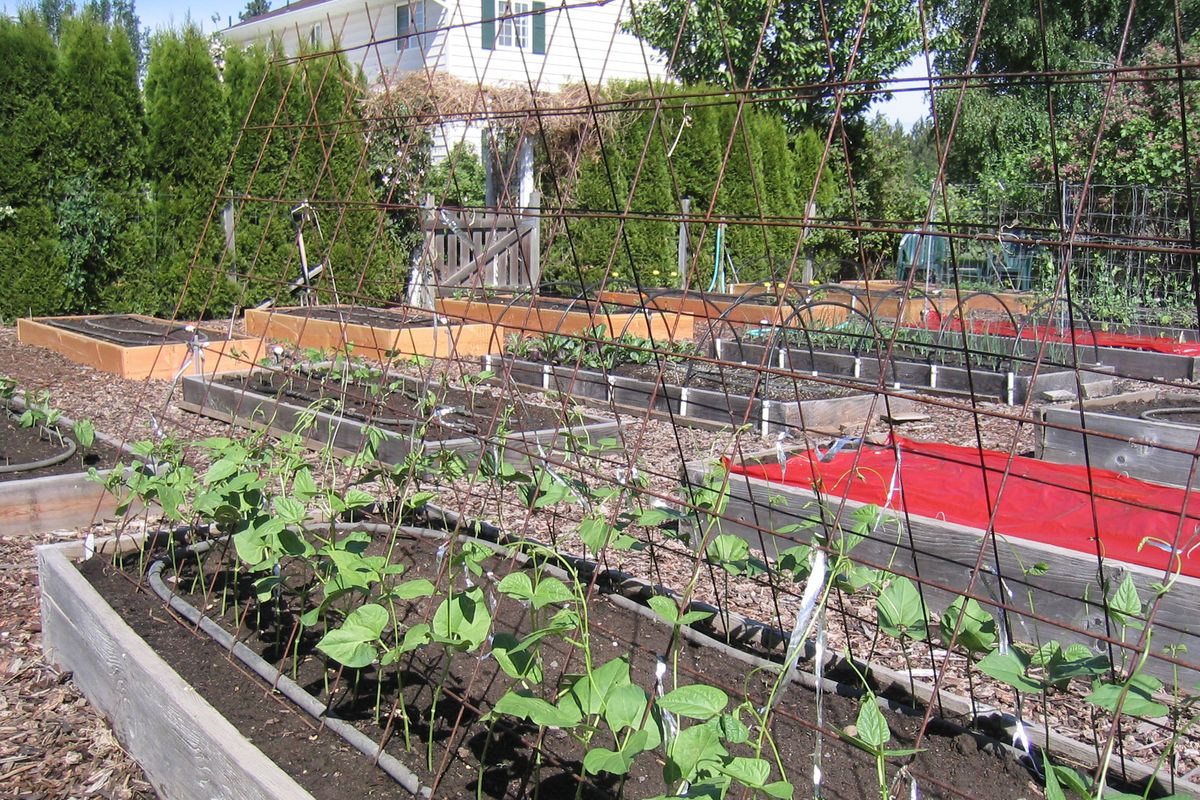Look beyond the frost

It’s just about time to plant the most popular vegetables in the home garden: warm-season crops.
In this region, the average last frost date is May 15 so I plant beans and corn after that. I wait until the end of the month to plant tomatoes, eggplants, squash, melons and basil just to be safe.
The most useful thing I have learned about growing beans is that the seeds should be planted with the scar side – where the seed curves inward – facing down. This increases germination because the seed will be facing the correct direction rather than using all of its energy trying to orient itself.
Bush beans should be planted about 8 inches apart, with the rows spaced one foot apart. Last year, I grew pole beans on an arbor that spanned the pathway between two raised beds. It was a roaring success because most beans hung down on the inside of the arbor, making harvesting a breeze.
Space pole beans 2 to 3 inches apart and give them a tall support to climb. Recommended varieties: bush beans, Blue Lake, Provider and Maxibel; pole beans, Roma, Italian pole bean and Fortex.
Corn needs to be planted in blocks to facilitate pollination. I can squeeze 27 corn seedlings into my 3- by 8-foot raised beds by adding a lot of nutrients to the soil.
Because cornstalks have short, stubby roots, they can easily blow over in a windstorm. Prevent this by adding soil around the cornstalk bases or by surrounding the bed with stakes and twine to give them extra support.
Corn varieties include Silver Queen, Peaches & Cream and Stowell’s Sweet.
Fresh tomatoes from the garden are the highlight of any gardener’s summer. Choose varieties that mature in less than 85 days.
I cover the soil in their beds with red plastic mulch to raise the soil temperature and increase productivity. Before planting each seedling, I remove the lowest pair of leaves, cut an “x” into the plastic mulch and plant the seedling deeply to increase root growth along the lower stem. Space them about 2 feet apart and give them a cage or sturdy stake for support.
Tomato varieties include Early Girl, Siletz, Stupice, Siberia, Early Goliath and Sungold.
Eggplants and peppers also benefit from red plastic mulch on their beds. Space the plants 8 to 12 inches apart. If they grow vigorously, they might need some support.
Varieties include, for eggplant, Ichiban and Black Bell; for peppers, Golden Bell, Jalapeno and Marconi Red.
Summer squash – zucchini, pattypan or scallop, and crookneck – grows in bush form and needs 2 feet between plants. They don’t particularly benefit from plastic mulch so I cover the surface of the bed with grass clippings from an untreated lawn. This helps the soil retain moisture and impedes weed growth.
Varieties include Italian Striped, Eight Ball and Sunburst.
When growing winter squash, select varieties needing less than 100 days to mature. The best ones for this region include acorn, butternut and spaghetti squash.
Sugar pumpkins and mini pumpkins are also fun types to grow. All grow on long vines so they need a bit of room in the garden. I space them 1 to 2 feet apart.
Winter squash varieties include Early Butternut, Honey Bear and Buttercup.